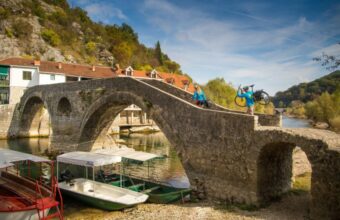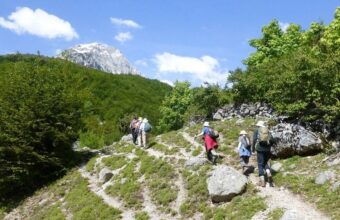The Best & Most Beautiful Beaches In Montenegro
An essential guide to Montenegro's most beautiful beaches and coastline
Montenegro is named after the soaring limestone peaks of its mountainous interior. The Venetians called it Monte Negro (meaning "Black Mountain") in the 11th century, and the local inhabitants translated this literally, so they now proudly refer to their country as Crna Gora.
But for modern-day visitors, it is the limpid turquoise waters of the Montenegrin coast, with its Mediterranean climate affording long balmy summers, which are the top draw.
Travelling along this 294-kilometre stretch of the glistening Adriatic, you'll encounter historical port cities and medieval fishing villages, offering a bounty of cultural sightseeing, plus sand-and-pebble beaches overlooked by modern resort hotels, giving onto crystal clear sea for swimming.
While in Montenegro, you'll feast on good local food – cuisine varies from region to region, but by the sea, you're guaranteed dishes based on fresh local fish, seasonal fruit and vegetables, and copious quantities of olive oil. Montenegro's fertile vineyards produce the rich ruby red Vranac wine, which accompanies most meals.
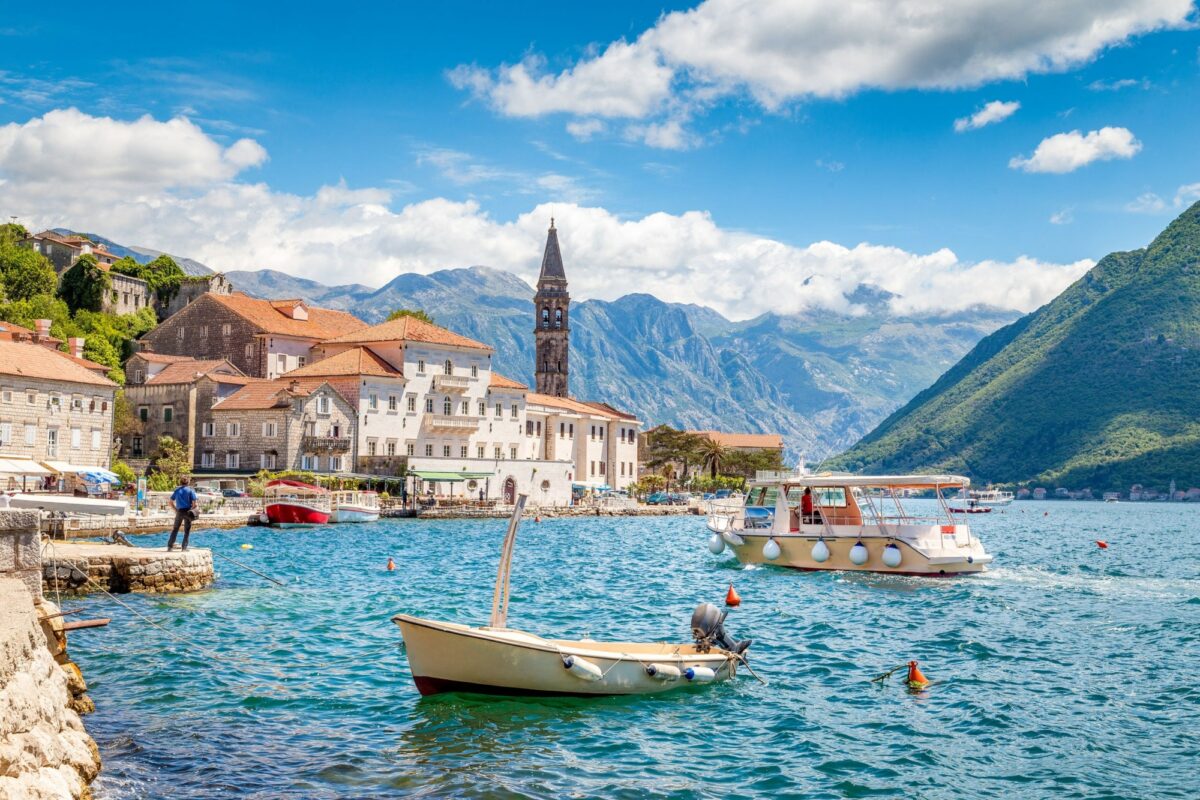
Perast in Kotor Bay, Montenegro
The most beautiful beaches in Montenegro
Along the coast, water sports enthusiasts can try sailing, sea kayaking, stand-up paddleboards, scuba diving and windsurfing. What's more, Montenegro lies en-route for yachters sailing up the Adriatic from Greece and Croatia and has become a prime destination for superyacht owners, with several modern marinas opening in recent years.
Want to see it for yourself? Here's an essential guide to Montenegro's best and most beautiful beaches.
Kotor Bay region
A 28-kilometre meandering inlet, rimmed by rugged limestone mountains – Kotor Bay is often mistakenly referred to as "Europe's southernmost fjord", though, in reality, it’s a sunken river valley. Historically, these sheltered waters have offered refuge to sailors, including the Ancient Greeks, Roman, Byzantines and Venetians, and when Montenegro was part of Yugoslavia, they had military naval bases here.
With such a fascinating history, Kotor Bay is packed with cultural attractions. The most notable is Kotor old town, which is a UNESCO World Heritage site. But if you drive around its shores, you'll find a succession of quaint waterside villages, made up of centuries-old stone cottages, noble villas and proud little churches of both the Eastern Orthodox and Roman Catholic faith.
The beaches inside Kotor Bay are not fantastic (locals prefer to head for the Budva Riviera to swim and sunbathe), but it offers a superb backdrop for water sports, such as sailing, kayaking and paddleboarding.
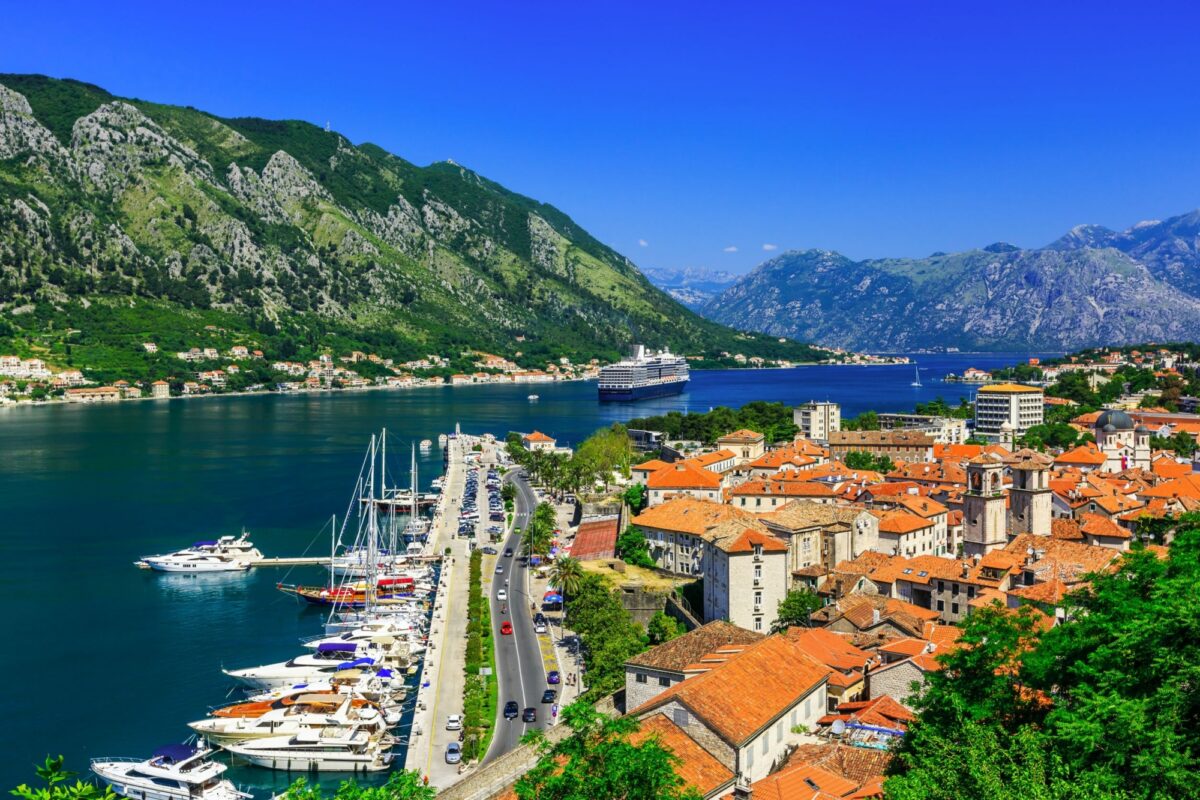
View of Kotor Bay from Mount Lovcen
Kotor Old Town
Deep inside Kotor Bay, tiny Kotor town sits compactly within Venetian-era fortifications, complete with gates and towers. Its car-free cobbled streets are packed with elegant Baroque stone buildings, some of which now host cosy boutique hotels, furnished with period antiques, and rustic seafood restaurants, serving local fare.
On the main square, the 12th-century Romanesque cathedral of St Tryphon was built in honour of Kotor’s patron saint. Under the Roman Catholic church, its interior is decorated with 14th-century frescoes, and the treasury displays a collection of finely-crafted gold and silver reliquaries.
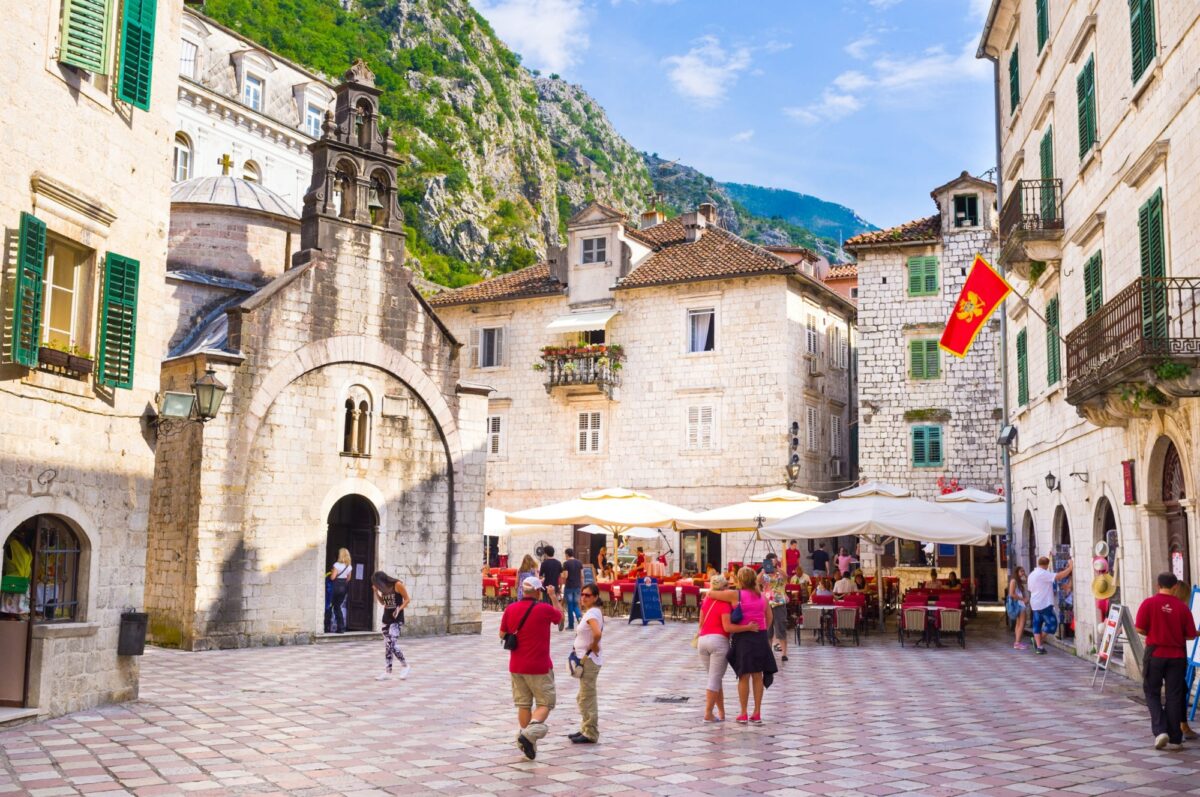
Kotor Old Town, Montenegro
Nearby, the Maritime Museum of Montenegro, housed in an 18th-century Baroque building, traces Montenegro's naval past. Under Venice (1420-1797), Kotor Bay's merchant navy flourished – by the 18th century it had 300 ships, and its sailors were noted for their bravery and skill. Exhibits include model ships, naval uniforms and navigational maps.
Before leaving Kotor, be sure to hike up to St John's Fortress, following a steep stone-stepped path, which zigzags uphill – wear decent walking shoes and bring a bottle of water. From the top, you get magnificent views down onto the terracotta rooftops of the old town, and out across Kotor Bay.
Note that Kotor does get very overcrowded with tourists in summer, not least because of the huge cruise ships that put down anchor in the bay, dwarfing the diminutive old town. However, come dusk, when the cruise ships depart, the streets of the old town are a joy to wander, with the Cathedral and the fortifications bathed in golden floodlighting.
Perast
The waterside village of Perast was once home to several families of wealthy sea captains, who built elegant villas set in gardens planted with exotic shrubs. But the highlight here has to be the charming view onto Kotor Bay, with two tiny twin islets, each capped by a 17th-century church.
While the island of St George is closed to visitors, the island of Our Lady of the Rock is open. Catch a boat from Perast waterfront to see the church displaying an icon of the Virgin – said to perform miracles – and the adjoining museum, exhibiting votive offerings, donated by local sailors as a way of thanking the Virgin for protecting them and their vessels during storms.
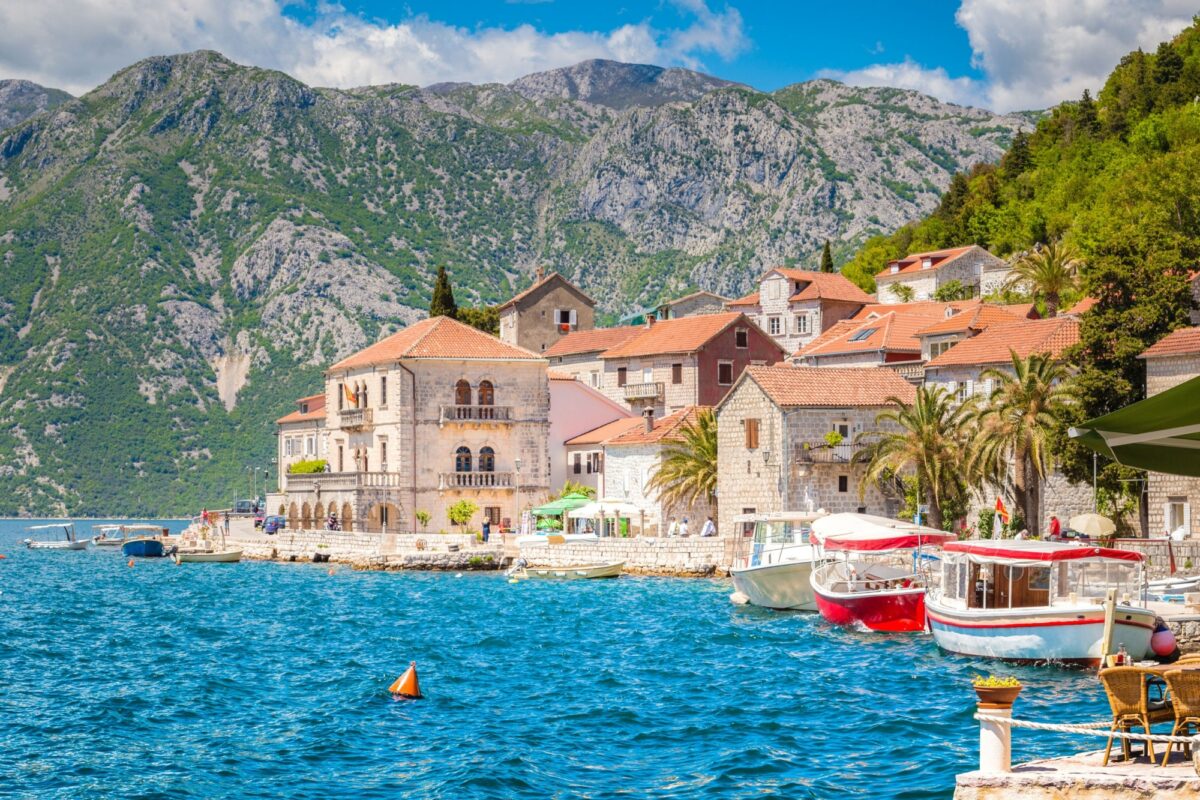
Perast, Kotor Bay, Montenegro
Tivat
If you want to explore Kotor Bay in the best way possible – aboard a sailing boat – head to Tivat, home of the glamorous Porto Montenegro super-yacht marina. With palm-lined quays and 450 berths, this ultra-modern complex includes designer boutiques, gourmet restaurants, chic cafes and the impressive Yacht Club Pool, a 64-metre turquoise-and-black infinity pool, rimmed by palms.
On request, Porto Montenegro marina can arrange private tailored sailing trips around Kotor Bay, aboard a yacht with skipper, and also they run RYA sailing courses. As you navigate the bay, you can sail up close to the twin islet-churches near Perast and the uninhabited pine-wooded islet of St Marko, but it is undeniably the dramatic mountainous backdrop that is most enchanting.
Luštica Peninsula
From Tivat, it’s a short drive to the Luštica peninsula, dotted with rural villages and pretty churches, and planted with lush olive groves which once supplied the Venetian Empire. Formerly a Yugoslav military naval base, no commercial tourism ever developed here, though there are now plans to build several luxurious five-star seaside resorts. While Luštica's north coast looks onto the sheltered waters of Kotor Bay, its south coast looks out to the open sea, and here you'll find some secluded coves with lovely little beaches, and several seasonal seafood eateries, popular with yachters.
Oblatno beach, giving onto shallow turquoise sea and backed by pine woods, is home to the swanky Almara Beach Club, with a wooden deck lined by white sunbeds and parasols, a restaurant and a bar hosting guest DJs.
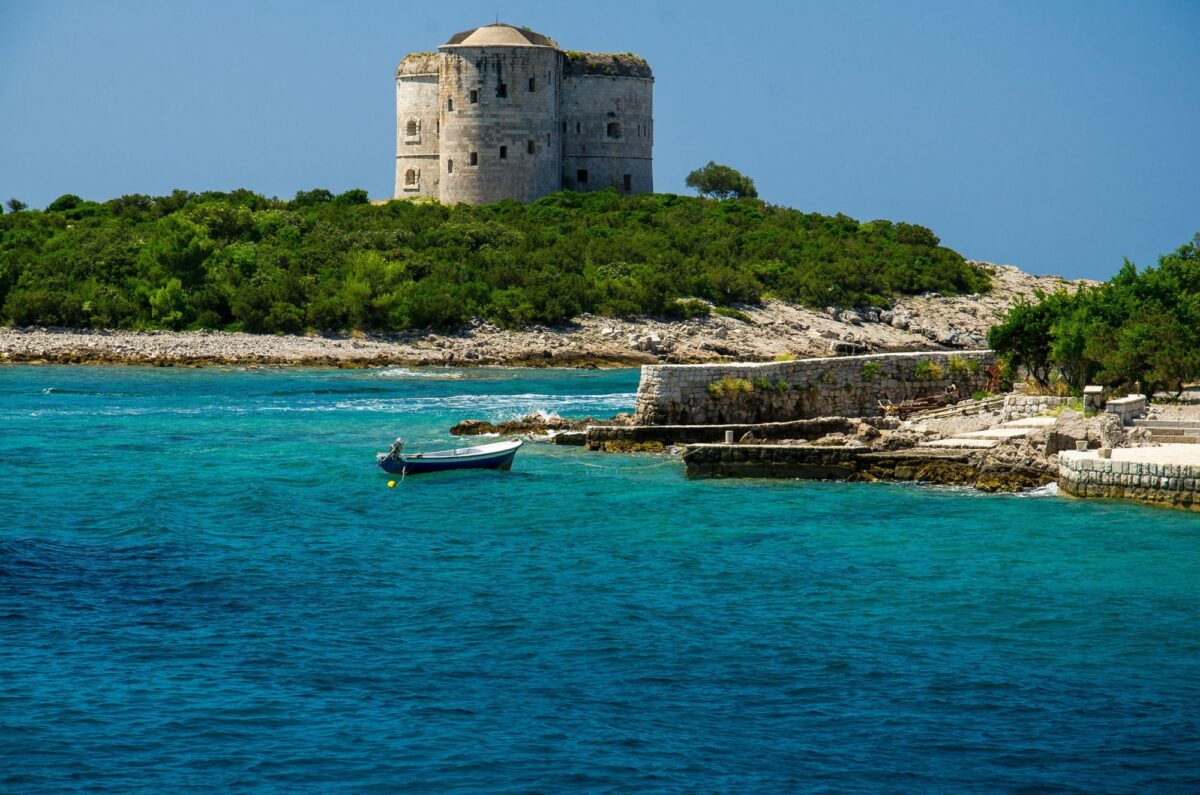
Arza Fortress, Zanjic, Lustica Peninsula
Žanjic beach, sitting in a remote sheltered cove, is a white pebble beach, backed by a row of informal bars and restaurants in the tiny village of Žanjić. In the neighbouring bay lies the smaller and much quieter Mirišta beach, which also has a decent restaurant. Lying close to the tip of Luštica peninsula, both Žanjić and Mirišta can be reached by boat from Tivat.
Approximately midway between Mirišta and Oblatno, near Veslo, lies Luštica's Blue Cave, a vast rocky cavern, bathed in luminous blue light during the middle of the day. You can paddle into the cave as part of a guided sea-kayak or paddleboard tour.
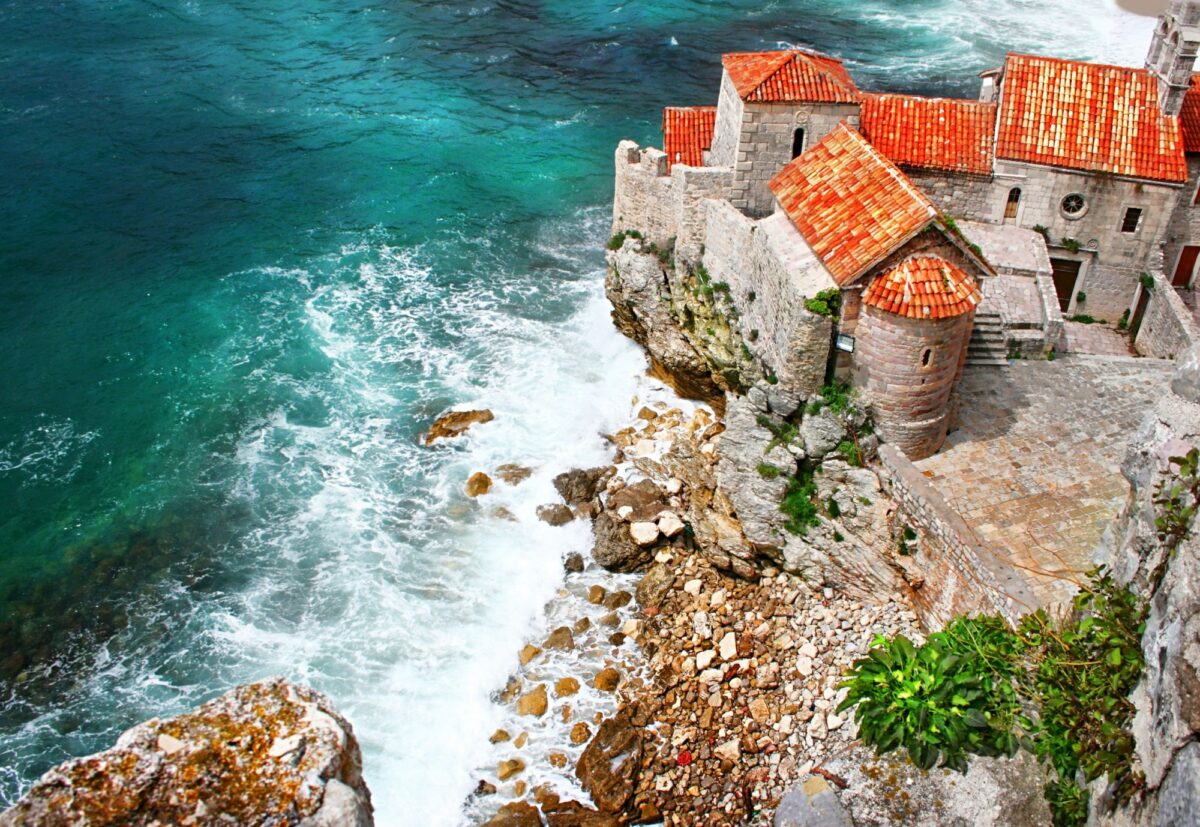
The Budva Riviera
Centring on the ancient city of Budva, Montenegro's most popular beaches lies along the so-called Budva Riviera, running 35km from Trsteno to Buljarica, with the glistening Adriatic Sea stretching into the horizon. Along the way you'll find modern seaside resorts, rocky coves and long stretches of sand-and-pebble beaches, lined with sunbeds and parasols.
Budva
Budva was founded by the Ancient Greeks in the fourth century BC and later fortified by the Venetians with medieval walls and towers to protect it from marauders. Its narrow car-free cobbled alleys reveal several old fine churches, a host of seafood restaurants, cocktail bars and souvenir shops.
Unfortunately, Budva's suburb has been spoilt by rampant development, with modern high-rise apartment blocks, many still under construction. You'll notice many signs written in Cyrillic script – Budva is particularly popular with Russians, who have invested in properties, and flock here each summer for its beaches and open-air nightclubs.
Jaz beach
Just 5km west of Budva, the road passes above Jaz beach, a 1km stretch of fine pebbles and sand, looking out onto a shallow sea, ideal for families with kids. Equipped with sunbeds, it's backed by make-shift seasonal cafes, offering pedal boats, kayaks and jet-skis to rent.
Jaz stages occasional open-air concerts – the Rolling Stones and Madonna have played here – and it used to host the three-day electronic music Sea Dance Festival each summer, though that now changes location from year to year.
Bečići beach
Lying 5km east of Budva, in a sheltered bay, this 2km long sandy beach is lined with sunbeds and umbrellas, and overlooked by a row of big modern resort hotels, complete with excellent water sports facilities and extensive spas, offering pools, massage and lush beauty treatments.
There's also a scuba diving club, for tuition and guided diving trips – nearby dive sites include the Oreste wreck (an Italian cargo ship which sunk during WWII) and the spectacular Galiola reef. You can expect good underwater visibility of up to 30m.
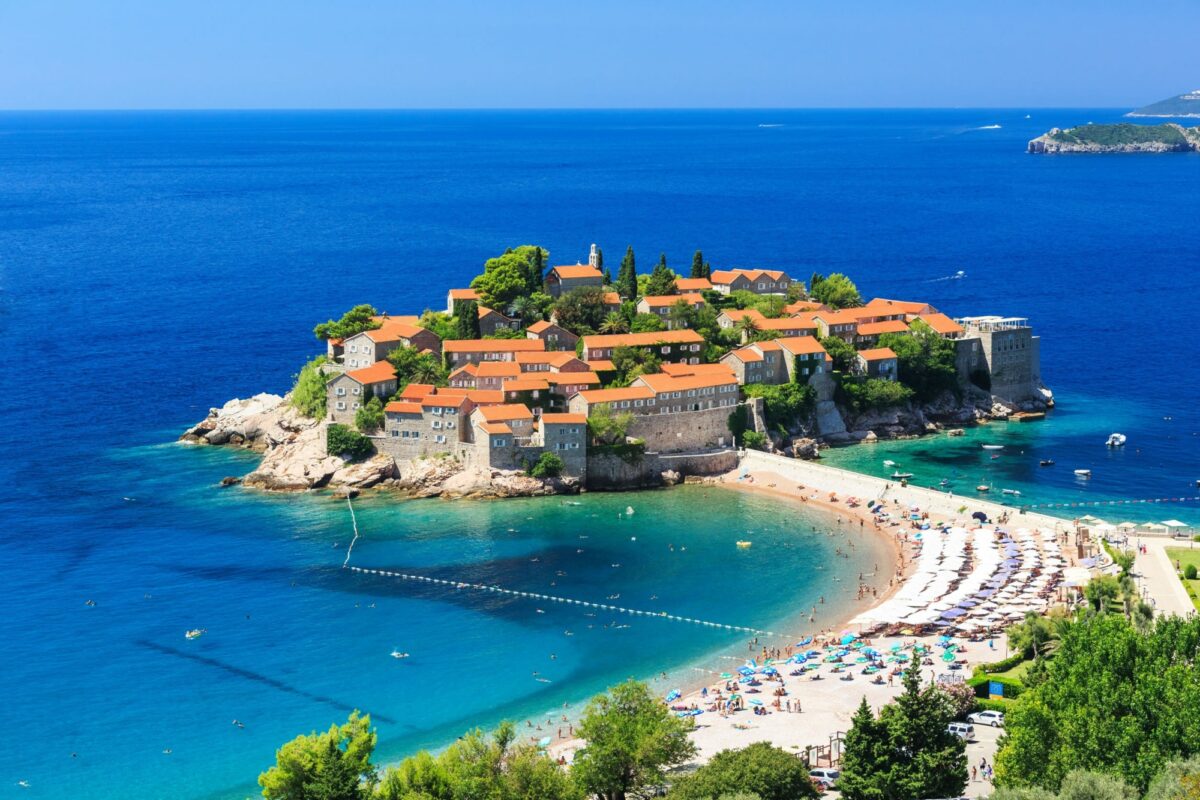
Sveti Stefan Island, Montenegro
Sveti Stefan
Undoubtedly Montenegro's most glamorous destination, Sveti Stefan is a tiny fortified islet, rising proudly from the Adriatic, joined to the mainland by a causeway. Dating back to the 15th-century, this former fishing village was turned into a hotel in the 1960s, attracting Hollywood glitterati such as Sophia Loren and Elizabeth Taylor.
In 2008, following a massive renovation, it reopened as a 5-star Aman resort. Here, you can see centuries-old stone cottages and romantic cobbled alleys that open onto tiny piazzas with exclusive little bars and restaurants. On the mainland, it incorporates the 1930's Villa Miločer spa, and two beautifully maintained fine pink sand beaches. Sveti Stefan lies 9km southeast of Budva.
South of the Budva Riviera
The stretch of coast from Bar down to Ulcinj, close to the Albanian border, is less visited and not as developed for tourists.
However, the Ulcinj area offers perfect conditions for wind-surfing and kite-surfing. Here, the 13km long Velika Plaža (meaning Big Beach) and the islet of Ada Bojana have soft sand, shallow sea and optimal thermal winds.
Each summer, several surfing clubs set up here and provide rental equipment and tuition. The wind is generally gentle in the morning, making it ideal for beginners, but blows stronger during the afternoon, when more experienced surfers take to the water.

